
I guess that makes me a fool, as Louise couldn't make the trip this time, We plan to go to the Venice Carnival so this was by way of a short scouting trip, to get the lay of the land. Or sea I should say, as Venice is actually made up of several hundred islands, slowly sinking into a shallow lagoon at the base of the River Po.
All important buildings have a water entrance, often more grand than their
land entrance which leads into a maze of narrow twisty passages linking
more spacious plazas full of shops and churches. Because of the height
of the buildings shutting out the light, the passages can actually be
quite claustrophobic, and very spooky at night when deserted. There are
no cars in Venice; even bicycles are excluded as all the bridges have steps,
so transport is solely by foot or by boat. And since the biggest waterway,
the Grand Canal, has only three bridges over it, that means frequent use
of the waterbus, unless you want long detours.

Venice is focussed around the Piazza San Marco, which contains the Duke's
palace, the basilica, a tall clock tower, many museums and, most importantly
for Venicians, the cafes that are fashionable be seen in. Oh, and lots and
lots of pidgeons.
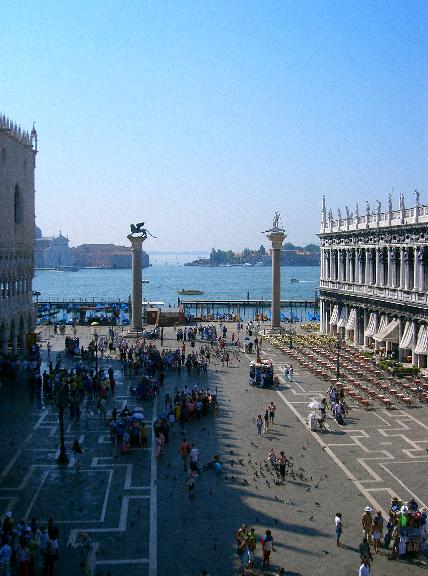
Venice was an independant country for a thousand years, ruling a trading
empire through diplomacy and naval might. The naval might was supplied
by the Arsenal, a boat yard that invented the production line nearly 500
years before Henry Ford, and from which we get our
word meaning weapon store. The diplomacy came from the Duke
(or 'Doge'), a 'first among equals' who was appointed for life to lead
the secretive Council of Ten, part of Venice's unique political structure which
balanced aristocrats against wealthy Schole (a cross between trade
unions and free masons).

I went around the Duke's Palace, where the grand council of aristocrats
met. Amid the ball rooms, map rooms and throne rooms there were also
signs of a very ruthless side to Venetian politics - prisons, torture
chambers, and a statue whose mouth was a letter box. People would write
letters denouncing each other for treason then anonymously post them
them into this locked box which could only be opened when three
seperate officials were present, each bearing a different key.
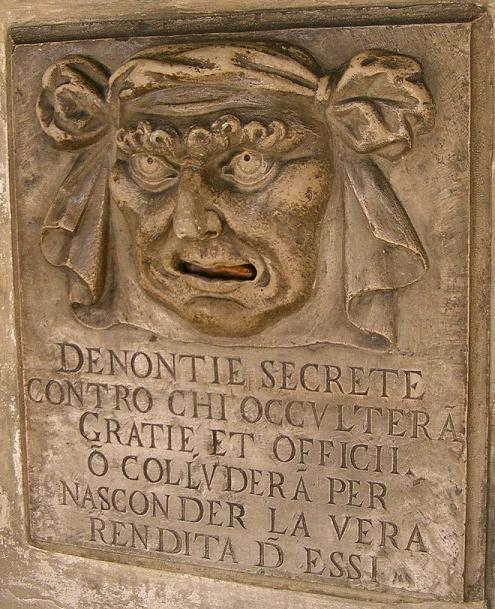
However this intense political system had another effect. Because the
competition made status and appearences so important, much of the
wealth they gained from trade and empire has been converted into an
unequaled artistic heritage. Even humble churches seem to prefer
Renaissance masterpieces to wall paper. Venice, being by nature
damp and prone to plagues, raised many new churches and momuments
praying for intercession from the Virgin Mary, every time a big
disaster came around.

And the finest of these churches is the basilica of Saint Mark, the
patron of Venice. The outside is covered in loot from Constantinople.
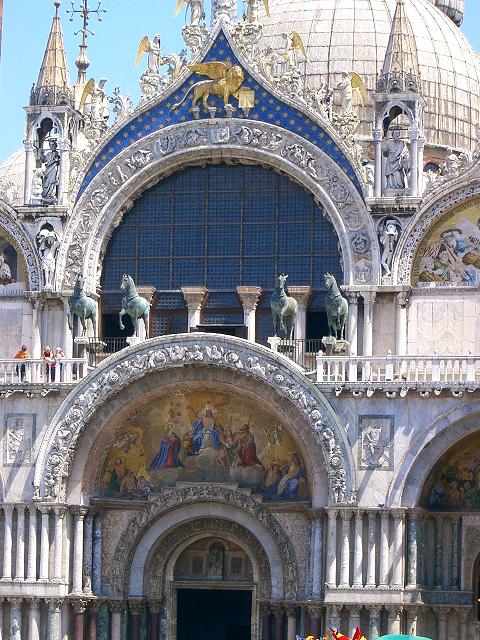
The inside is entirely covered with murals made from tiny gold leaf
covered glass tiles.
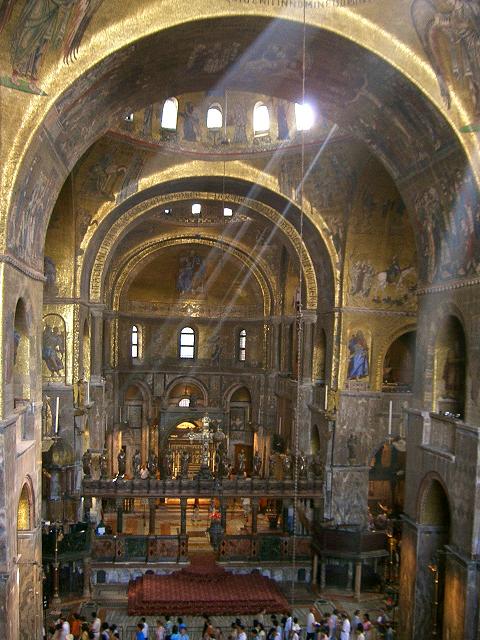
And it is filled with loot too. A veritable armoury of relics.
A screen made from gold and gems. Swords, candlesticks; enough
gold to feed all of Venice for ten years. But their biggest piece
of loot is something special. They stole a saint. St. Mark died
in Alexandria where his body was kept until two Venetian merchants
smuggled it out of the country. Perhaps it is appropriate that
his symbol is not just a lion, but a lion with wings, since his
body was certainly not left a lying at rest.
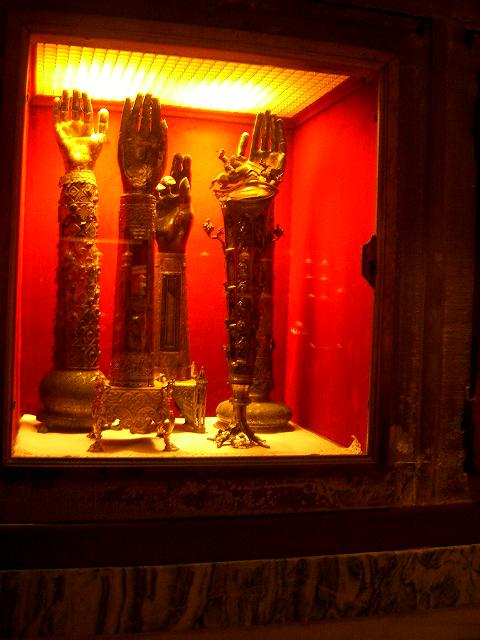
The tradition is kept up today, by swindlers and by tourist traps. I went on a boat trip to
Murano, an island famous for its glass, and found my self trapped
in a single glass factory with no access to the island itself, just
to a hideously over priced shop. Still, the glass was nice and I
did get to see a glass blower create a statue of a horse in about
40 seconds. Venice at one point was very keen on keeping the
knowledge of how to make good glass mirrors to itself - they used
assassins to kill any foreigner suspected of learning the secret.
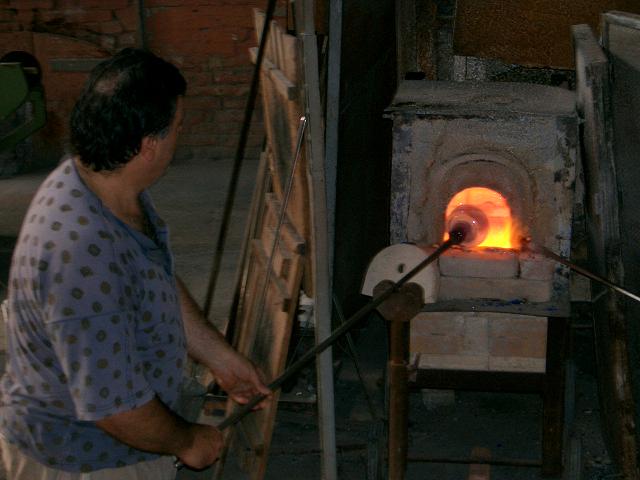
I did buy a glass horse - but not until the tour reached Burano,
the next island over, where they were one fifth the price. Burano
is famous for its brightly coloured fisherman's houses and the
lace of its women.
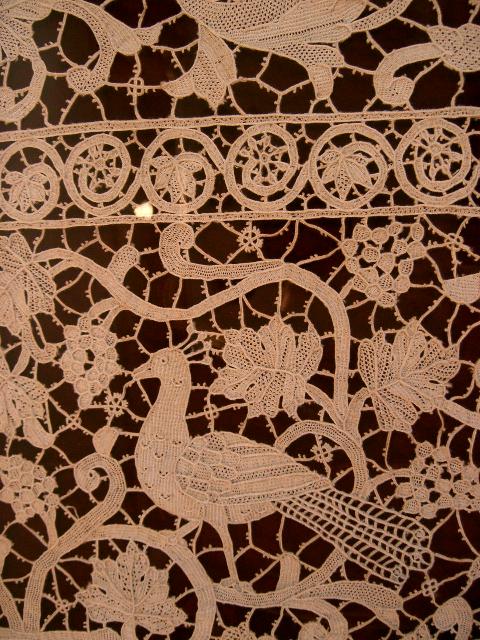
I visited the lace museum there, and got the impression that
working at stiches that small for many years is not kind to the hands.
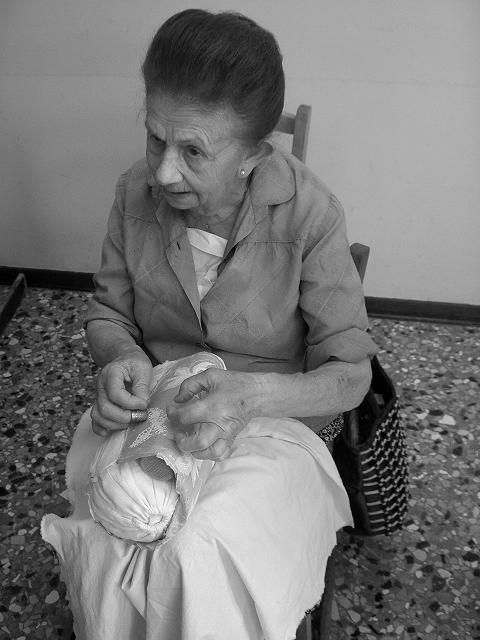
I spent most of my time in central Venice, looking at art. I loved
the globes showing the constellations with the mythical figures traced
over the stars. I loved the Comedia dell' Arte, with Arlecchino,
Pantalone, Dottore Balanzone and Capitano Spavento. I loved the
fantastic paintings of angels by Tintoretto, Titan and Tiepolo.
I loved the music, the pizza, the pistachio ice cream. I loved
the silly bits of history, such as throwing rings into the sea,
or holding yearly pitched battles on top of bridges for sport.
But I did make one serious visit.
The Ghetto. The original one. "Geto" means foundry, and
in 1515 when the ruling council of Venice confined the, mainly
Ashkenazi, Jews in the city to a small walled area near a metal
works, their German accents changed "Geto" to "Ghetto" and a new
word was born. And a new concept, because the practice was then
copied through out medieval europe.
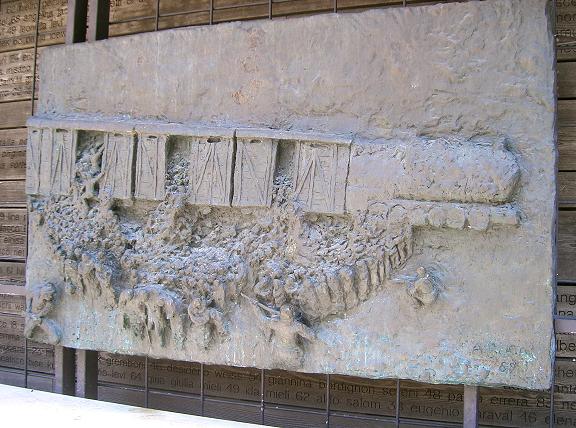
My flight back was somewhat delayed, but it did give me time to think. There is little to do at night except wander the canals, so bring a book or two. I'd suggest the Stones of Venice by John Ruskin, and the Shadow of the Lion (both available free online). You do need to watch out for the prices (especially water taxis, gondolas or anything near San Marco) but a little forethought can go a long way. I avoided gondolas entirely, as I'm saving that experience up for next time, when I go with Louise. It says something about a city when the number one tourist attraction is not walking over its famous bridge, but going under it by boat. Even the trip to the airport can be done, door step to door step, by boat, which is a good thing too as it gets very hot in the summer - most locals seem to take a break between 12 and 4. I advise taking your time, not trying to fit too much in, and enjoying your strolls. I did.